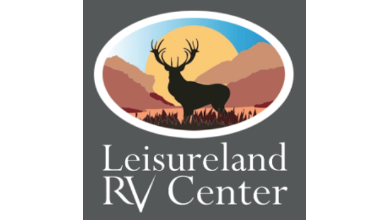Blog: The Crucial Relationship Between Marketing Efforts and the Sales Cycle
 Mills
MillsWe’re nearing that time of year when it feels like every automotive company is running a holiday special – and achieving great results. This form of seasonality is often seen as applicable to the RV industry, as well. RV industry marketers may consider business to be seasonal; after all, most people aren’t touring around in their RV in minus-28-degree temperature. Yet this mindset – that marketing efforts can ebb and flow based on the season – can produce lackluster results and dampen the impact of seasonal campaigns.
So, let’s talk about the crucial relationship between marketing efforts and the sales cycle. I’ll be talking specifically about RV sales but I’ll note the differences between other industries because we can use the findings from other professionals to inform and improve marketing efforts and impact in the RV industry, as well. To begin, let’s consider the benefits of running an evergreen marketing plan.
How the Sales Cycle Impacts Marketing
Think about the last time you bought an item of clothing. Did you spend minutes, days, weeks, months or years deciding that you’d click “add to cart?” For the majority of clothing purchases, you are not going to spend months deciding if you want the piece. You’re going to be interested as the result of some sort of trigger, and if it matches your desire and budget, you’ll make the purchase. With a transactional, frequent sales cycle, an email alert with a 20 percent-off coupon code will likely increase the chances of a purchase dramatically. RVs, however, are not impulse buys. And we can’t market them as such.
Anecdotally you may know someone or sold a unit to someone who went from considering an RV purchase to buying one in a matter of days or weeks – but this is the exception, not the norm. The majority of buyers tend to be in the market for multiple months, even up to a few years, before making a purchase. Our experience with leading brands in the industry shows an average sales process of 12+ months. Adding additional complexity is the reality that the activities being taken by buyers will vary widely throughout that time. Some buyers will be actively researching different brands and models. Others could be farther along the journey and exploring financing options. Still another set could be extremely early and just researching for fun and not truly at a place to even realistically consider a purchase. The challenge this creates for the RV marketer is trying to relate to all of these different buyers along their journey.
Given that you will not be able to create personalized content for every person researching your company, it is important to be creating content that aligns with each step in your buyer’s journey. If you have not considered the steps in your buyer’s journey, start there, and then overlay content that would speak to the buyer at each stage. There are ways to gather information on where specific buyers are in the process, as well. You can create branded content offers which ask progressively more personal questions and determine if they’re nearing a purchasing decision versus simply gathering education. Once you get the sense for where they are, you can group buyer types together and market to them with content relevant to where they are in the process.
Evergreen Marketing Initiatives
Refer to your marketing strategy blueprint to come up with a list of channels to utilize for your initiatives, being sure each potential audience you are connecting with is considered. There may be some initiatives that can be timed for the season, like a blog post written about how a family toured four major national parks all on their kids’ fall break being published in October. That addresses the timely element of the season and paints a picture of how potential RV owners may utilize their coach. Many younger potential buyers are likely very active on social media; as such, the RV brand should keep a steady pace of content published throughout the year on social channels. No matter what time of year that it happens, brands should be present across their owned channels and use updates such as new model changes to keep potential buyers engaged. Inclusion at industry events or with specific awards, if applicable to customers, should also be shared no matter the time of year. Of course, these aren’t the only things that could be shared year-round; the options are as limitless as a marketer’s creativity. The major point of having these efforts is to already have brand awareness and trust built in when you layer in specific campaigns to the marketing mix.
Speaking of campaigns …
We’ve talked about why evergreen marketing tactics should be deployed year-round. Now, what about sales and special offers that happen during a particular time of year? Layering in a well-timed campaign around a specific sale or offer is still an incredibly impactful idea. For example, RV manufacturers will often run year end promotions to drive sales of specific models which are about to be updated or need to move off of the dealer lots. Of course, when demand is greatly exceeding supply, these become a lot less prominent.
These sales work best when you are already known and trusted by the consumer you’re looking to target. If you haven’t been relevant during earlier portions of their journey, trying to get them to trust you and choose you when they are at the point of purchasing decision becomes exceedingly unlikely. That’s why having touchpoints throughout the year – whether there’s a sale or it’s a popular RV season – is so important. RV marketers must be hyper-focused on pinpointing their unique audiences and finding ways to communicate with them for months if not years on-end. When someone is finally ready to make that large-scale purchase, those marketing efforts will pay off in the form of a brand follower becoming a brand-new customer.
Joe Mills is the Business Development Manager at Element Three, a Carmel, Ind.-based marketing consultancy. He can be reached at joe.mills@elementthree.com.



